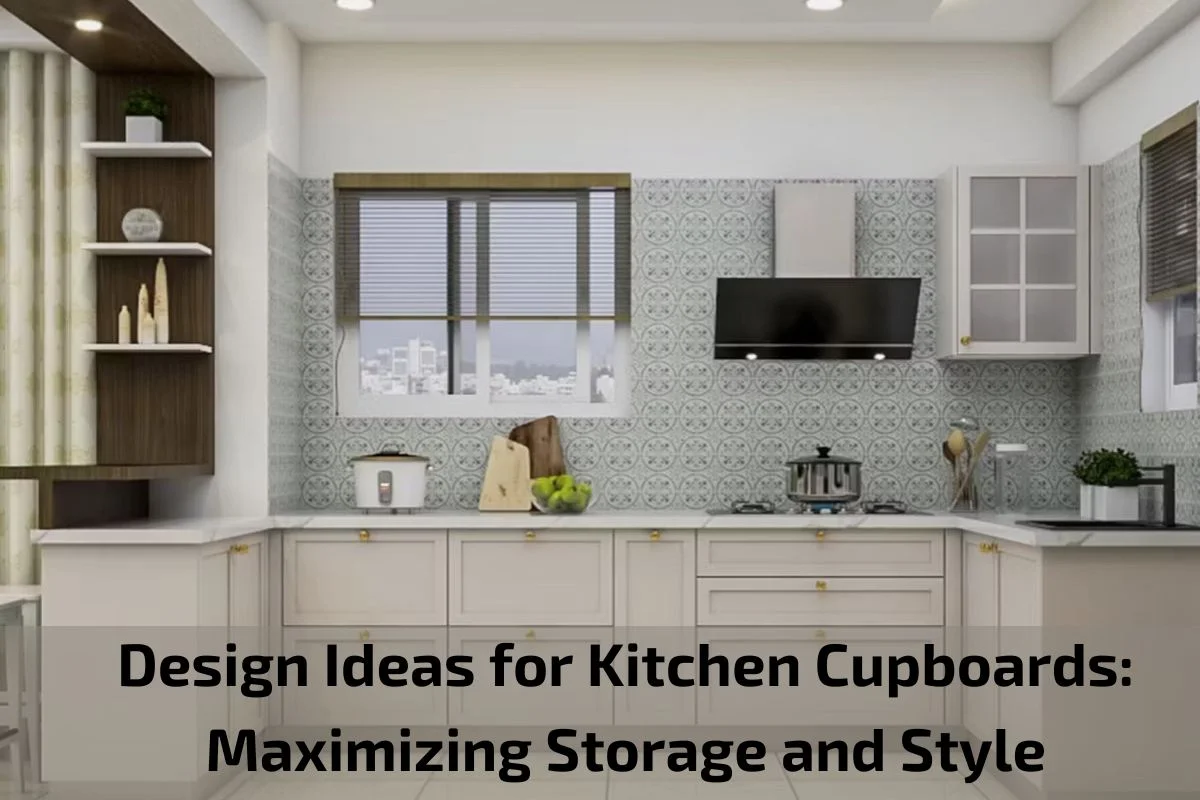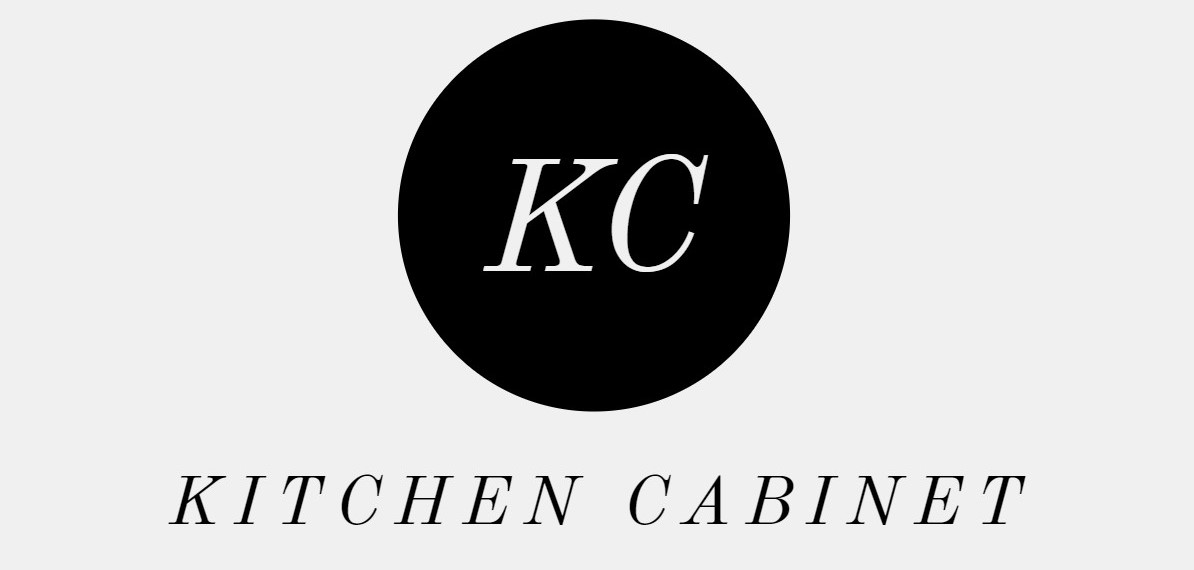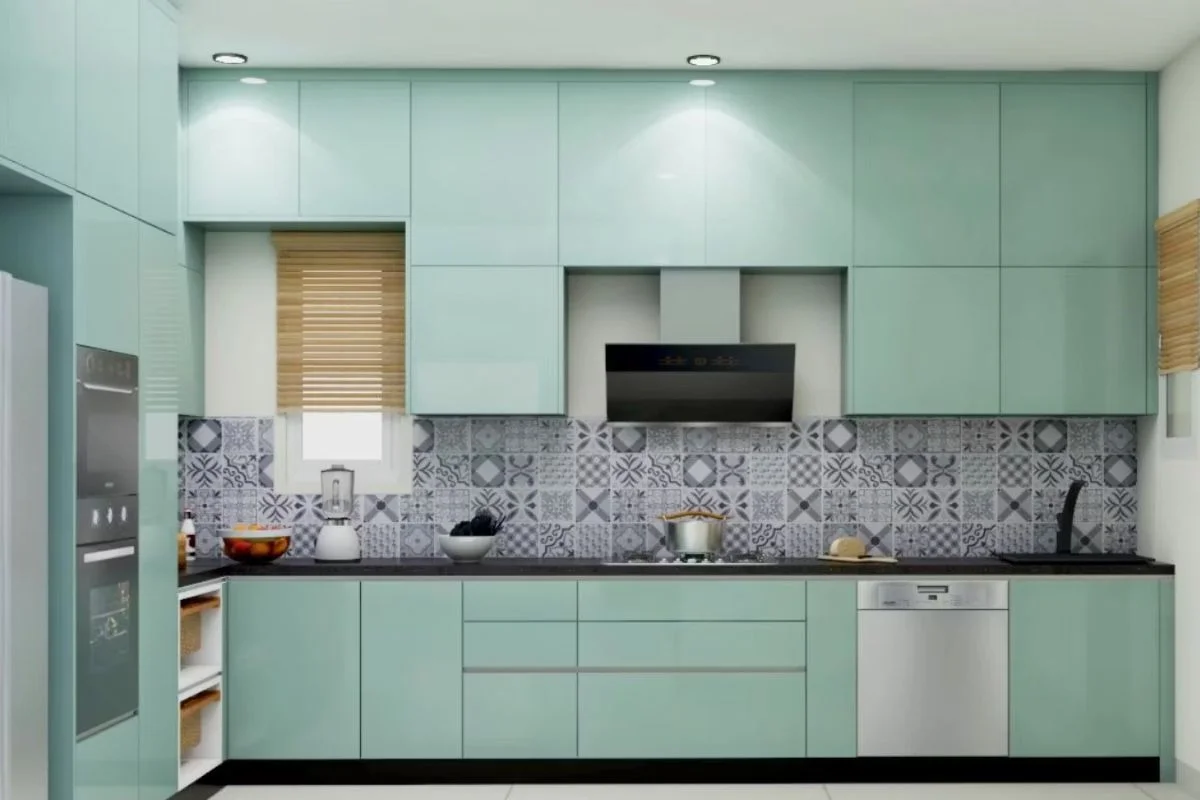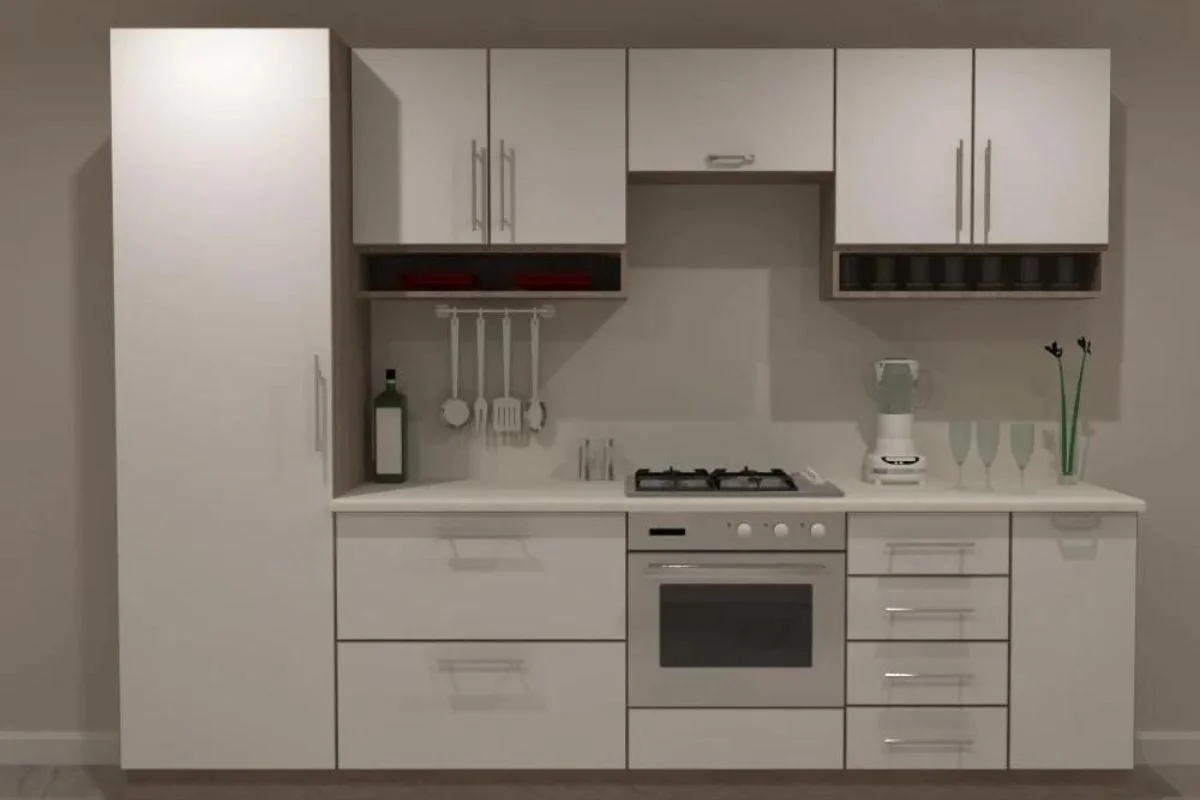
Kitchen cupboards play a vital role in both the functionality and aesthetics of a kitchen space. They provide essential storage for cookware, utensils, food items, and more, while also contributing to the overall design and style of the kitchen. With a myriad of design options available, homeowners have the opportunity to create a kitchen that not only meets their storage needs but also reflects their personal taste and complements the overall décor of their home.
In this guide, we’ll explore a variety of design ideas for kitchen cupboards, focusing on maximizing both storage and style. Whether you have a small kitchen with limited space or a spacious culinary haven, there are numerous ways to optimize your cupboard layout for efficiency and visual appeal.
From clever storage solutions to innovative design elements, we’ll showcase creative ideas to help you make the most of your kitchen cupboards. Whether you prefer a sleek modern look, a cozy rustic feel, or something in between, there are design ideas to suit every taste and budget. Let’s dive in and discover how to elevate the functionality and style of your kitchen with inspiring cupboard designs.
Importance of kitchen cupboards in kitchen design
Kitchen cupboards play a pivotal role in kitchen design, offering both practical functionality and aesthetic appeal. Here are some reasons why kitchen cupboards are essential in kitchen design:
Storage Optimization: Kitchen cupboards provide valuable storage space for a variety of items, including cookware, dishes, utensils, small appliances, and pantry items. With well-designed cupboards, homeowners can maximize storage capacity and keep the kitchen organized and clutter-free.
Organization and Efficiency: Properly designed kitchen cupboards help streamline meal preparation and cooking processes by keeping essential items easily accessible and well-organized. Cabinets with adjustable shelves, pull-out drawers, and specialized organizers make it easier to find and retrieve items, improving overall kitchen efficiency.
Customization and Personalization: Kitchen cupboards come in a wide range of styles, sizes, and configurations, allowing homeowners to customize their kitchen storage solutions to suit their specific needs and preferences. Whether it’s selecting cabinet materials, finishes, or hardware, homeowners can personalize their kitchen cupboards to reflect their unique style and taste.
Space Utilization: Kitchen cupboards are designed to make the most of available space, even in kitchens with limited square footage. Tall cabinets, corner cabinets, and specialized storage solutions help optimize space utilization, allowing homeowners to maximize storage capacity without sacrificing floor space.
Aesthetic Enhancement: Beyond their functional role, kitchen cupboards contribute significantly to the overall aesthetics of the kitchen. Cabinets with stylish door styles, decorative hardware, and complementary finishes can enhance the visual appeal of the kitchen, creating a cohesive and harmonious design aesthetic.
Value Addition: Well-designed kitchen cupboards can enhance the value of a home, as they are a key feature that potential buyers consider when evaluating a property. Modern, well-maintained cupboards can make a kitchen more attractive to prospective buyers and contribute to a higher resale value.
Long-Term Investment: Quality kitchen cupboards are a long-term investment that can withstand daily use and maintain their functionality and appearance for years to come. By investing in durable materials and craftsmanship, homeowners can enjoy the benefits of their kitchen cupboards for many years with minimal maintenance.
Definition and purpose of kitchen cupboards
Kitchen cupboards, also known as kitchen cabinets or cabinetry, are essential storage units found in kitchens. They typically consist of enclosed compartments with doors, shelves, and drawers, designed to store a variety of kitchen items such as cookware, dishes, utensils, food ingredients, small appliances, and more.
The primary purpose of kitchen cupboards is to provide efficient and organized storage for kitchen essentials, optimizing space and accessibility within the kitchen. By keeping items neatly stored away and easily accessible, kitchen cupboards help streamline meal preparation, cooking, and cleanup processes, contributing to overall kitchen efficiency and functionality.
In addition to their practical function, kitchen cupboards also play a significant role in kitchen design, contributing to the overall aesthetic appeal and style of the space. With a wide range of styles, materials, finishes, and configurations available, kitchen cupboards can be customized to complement the design theme of the kitchen and reflect the homeowner’s personal taste and preferences.
Types of Kitchen Cupboards
When it comes to kitchen cupboards, there are various types available to suit different storage needs, kitchen layouts, and design preferences. Here are some common types of kitchen cupboards:
Base Cabinets:
- Located at the base of the kitchen layout, typically beneath countertops.
- Offer storage for pots, pans, and larger kitchen appliances.
- Available in different widths and configurations to accommodate sink bases, cooktops, and corner spaces.
Wall-Mounted Cabinets:
- Installed above countertops and kitchen work areas, usually mounted to the wall.
- Provide storage for dishes, glassware, and dry goods.
- Come in various heights and widths to fit different kitchen layouts and storage needs.
Tall Cabinets:
- Floor-to-ceiling cabinets that maximize vertical storage space.
- Ideal for storing pantry items, brooms, mops, and other tall or bulky items.
- Can feature adjustable shelves or pull-out drawers for customizable storage options.
Corner Cabinets:
- Designed to utilize corner spaces in the kitchen layout.
- Available in different configurations, including L-shaped or diagonal cabinets.
- Feature rotating shelves, lazy Susans, or pull-out trays for easy access to items stored in the corners.
Specialty Cabinets:
Include specialized storage solutions tailored to specific kitchen needs.
Examples include:
- Pantry Cabinets: Designed for storing food items, canned goods, and dry ingredients.
- Wine Rack Cabinets: Feature wine bottle storage racks and shelves for wine glasses.
- Spice Rack Cabinets: Equipped with built-in spice organizers and pull-out trays for easy access.
- Appliance Garages: Conceal small kitchen appliances, such as toasters and blenders, when not in use.
Drawer Base Cabinets:
- Feature drawers instead of traditional doors and shelves.
- Offer convenient storage for utensils, cutlery, and kitchen gadgets.
- Can be customized with dividers, organizers, and inserts for efficient organization.
Open Shelving:
- Not technically cupboards, but still a popular storage option in modern kitchens.
- Consist of shelves mounted directly to the wall without doors.
- Provide an open and airy look, allowing for easy access to frequently used items and decorative display.
Design Ideas for Maximizing Storage Kitchen Cupboards
Maximizing storage in kitchen cupboards is essential for keeping the kitchen organized and functional. Here are some design ideas to help homeowners make the most of their cupboard space:
Adjustable Shelving: Install adjustable shelves in kitchen cupboards to accommodate items of different heights. This allows for flexible storage options and makes it easier to organize items efficiently.
Pull-Out Drawers: Incorporate pull-out drawers in base cabinets to maximize storage and accessibility. These drawers allow for easy access to items stored at the back of the cupboard, eliminating the need to reach or bend down to retrieve items.
Vertical Dividers: Use vertical dividers or partitions within cupboards to organize baking sheets, cutting boards, and other tall or narrow items vertically. This prevents items from leaning against each other and makes it easier to find what you need.
Door Organizers: Install door-mounted organizers on the inside of cupboard doors to utilize otherwise unused space. Door organizers can hold spices, cleaning supplies, or small kitchen gadgets, keeping them easily accessible while maximizing storage space.
Corner Solutions: Utilize corner cabinets effectively with solutions such as lazy Susans, rotating shelves, or pull-out trays. These solutions allow for easy access to items stored in corner cabinets without having to reach or stretch.
Drawer Organizers: Use drawer organizers within cupboard drawers to keep utensils, cutlery, and small kitchen gadgets neatly organized. Drawer organizers come in various sizes and configurations to fit different types of items.
Hanging Storage: Install hooks or rails on the inside of cupboard doors to hang pots, pans, and lids. This frees up shelf space and keeps cookware easily accessible while maximizing storage capacity.
Stackable Containers: Use stackable containers or baskets within cupboards to group similar items together and maximize vertical storage space. Stackable containers are particularly useful for storing snacks, canned goods, or small pantry items.
Plate Racks: Install plate racks or dividers within cupboards to store plates, bowls, and serving dishes vertically. This prevents dishes from stacking on top of each other and makes it easier to access individual items.
Overhead Storage: Utilize overhead space above cupboards by installing shelves or cabinets for storing infrequently used items or decorative accessories. This helps keep countertops clutter-free while maximizing storage capacity.
Installation Considerations
When installing kitchen cupboards, there are several important considerations to keep in mind to ensure a successful and functional outcome. Here are some key installation considerations:
Accurate Measurements: Before installing kitchen cupboards, it’s essential to take accurate measurements of the kitchen space, including wall dimensions, ceiling height, and any obstacles such as windows, doors, or appliances. This ensures that the cupboards will fit properly and that there is enough clearance for doors and drawers to open fully.
Leveling and Alignment: Proper leveling and alignment are crucial for the stability and functionality of kitchen cupboards. Use a level to ensure that the cupboards are installed evenly and that they are aligned with adjacent cupboards and walls. Adjust the height of legs or shims as needed to achieve a level installation.
Wall Studs and Anchoring: Securely anchor kitchen cupboards to wall studs to ensure stability and prevent sagging or tipping over time. Locate wall studs using a stud finder and use appropriate screws or anchors to attach cupboards securely to the wall. For heavy or oversized cupboards, additional support may be required.
Plumbing and Electrical Considerations: Take into account plumbing and electrical fixtures when installing kitchen cupboards, especially around sinks, dishwashers, and outlets. Leave space for plumbing pipes, electrical outlets, and switches, and ensure that cupboards do not obstruct access to these fixtures.
Ventilation and Clearance: Provide adequate ventilation and clearance around kitchen cupboards, especially around appliances such as refrigerators, ovens, and dishwashers. Allow for sufficient space between cupboards and appliances to ensure proper airflow and ventilation, and to allow for easy access during installation and maintenance.
Cabinet Assembly: If assembling flat-pack or modular kitchen cupboards, carefully follow the manufacturer’s instructions and assemble each cabinet accurately and securely before installation. Ensure that all components are properly aligned, tightened, and fastened to prevent issues during installation or use.
Professional Installation: Consider hiring a professional installer or contractor for complex or large-scale kitchen cupboard installations, especially if you lack experience or specialized tools. Professional installers can ensure that cupboards are installed correctly, safely, and efficiently, saving time and reducing the risk of installation errors.
Maintenance and Care Tips
Proper maintenance and care are essential for preserving the beauty and functionality of kitchen cupboards. Here are some maintenance and care tips to help homeowners keep their cupboards looking great for years to come:
Regular Cleaning: Wipe down cupboard surfaces regularly with a soft, damp cloth to remove dust, dirt, and grease buildup. Avoid using abrasive cleaners or harsh chemicals, as these can damage the finish of the cupboards.
Use Mild Cleaning Solutions: For tougher stains or grease buildup, use a mild cleaning solution made from warm water and a gentle dish soap. Avoid using abrasive scrubbers or scouring pads, as these can scratch the surface of the cupboards.
Avoid Excess Moisture: Avoid using excessive water when cleaning cupboards, as prolonged exposure to moisture can damage wood finishes and cause warping or swelling. Wipe up spills promptly and ensure that cupboards are properly ventilated to prevent moisture buildup.
Polish Wood Finishes: For wooden cupboards, use a high-quality furniture polish or wood cleaner periodically to nourish and protect the wood finish. Apply the polish with a soft cloth in the direction of the wood grain, and buff to a shine for a polished look.
Tighten Hardware: Periodically check and tighten any loose screws, hinges, or handles on the cupboards to ensure that they are securely fastened. Loose hardware can cause doors and drawers to become misaligned or difficult to open and close.
Protect Against Heat and Sunlight: Avoid placing hot pots, pans, or appliances directly on cupboard surfaces, as heat can damage the finish. Additionally, protect cupboards from direct sunlight, as prolonged exposure can cause fading or discoloration.
Repair Damage Promptly: Address any scratches, chips, or dents in the cupboard surfaces promptly to prevent further damage. Use touch-up paint or wood filler to repair minor damage, or consult a professional for more extensive repairs.
Organize Contents: Keep cupboard interiors organized to prevent clutter and make it easier to find items. Use drawer organizers, shelf dividers, and storage bins to maximize space and keep items neatly arranged.
Avoid Overloading: Avoid overloading cupboards with heavy items or too many items, as this can strain hinges and cause shelves to sag. Distribute weight evenly and consider installing additional support brackets for heavy items.
Schedule Professional Maintenance: Consider scheduling regular professional maintenance for your kitchen cupboards, such as refinishing or resealing wooden surfaces or adjusting hinges and hardware. Professional maintenance can help prolong the lifespan of cupboards and keep them looking their best.
Conclusion
In conclusion, proper maintenance and care are essential for preserving the functionality, beauty, and longevity of kitchen cupboards. By following the maintenance and care tips outlined in this guide, homeowners can ensure that their cupboards remain in excellent condition and continue to enhance the overall look and organization of their kitchen space for years to come.




